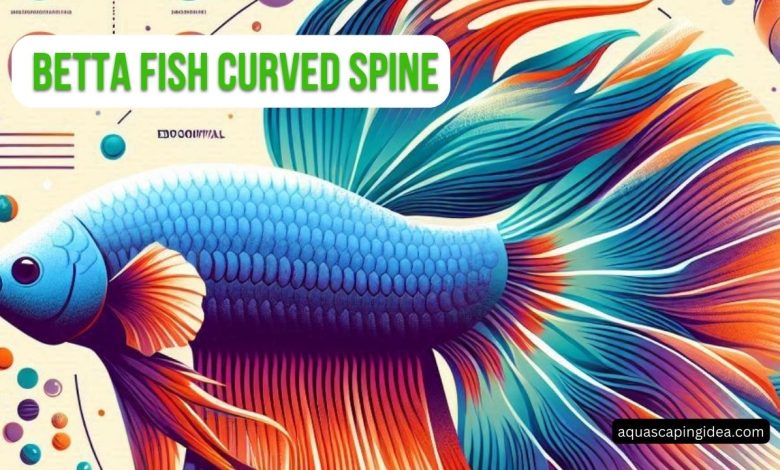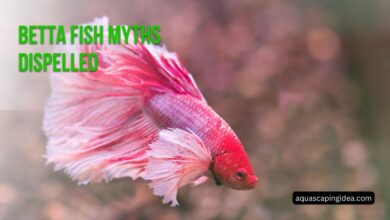Betta Fish Curved Spine

Like an elegant dancer frozen in mid-spin, betta fish stricken with spinal deformities lose the graceful flow of fins and torso we expect from these creatures. Curved spines create asymmetry or stiff contortions robbing our fishy friends of smooth movement through their aquatic ballets.
What causes betta backbones to bend?
A bent backbone or spinal deformity in betta fish can be caused by a number of factors. Two common causes are injury and genetics. Bettas with long, heavy fins are prone to injuring their spine if they get caught in decor or filtration. Improper handling like dropping the fish can also damage the vertebrae and cause curving. Some bettas are genetically predisposed to spinal issues due to selective breeding practices that favor long fins. Other potential causes include nutritional deficiencies, infections, and water quality problems. While bent spines are often permanent, bettas can live for years with this condition if given a safe environment and proper care. Providing clean, warm water and a diet with vitamin supplements may help reduce further spinal damage.
Causes of Spinal Curves
Vertebral column deformities arise from injury, nutritional deficiencies, infections, or congenital defects during development. The spine flexes laterally, vertically, or twists abnormally leading to curved postures like:
Scoliosis: An unnatural side-to-side spinal bend, the most common curvature disorder in bettas. Lordosis: Excessive downward arch causing a humped back. Kyphosis: Exaggerated upward arch creating a prominent hump. Corkscrew deformity: The spine rhythmically twists vertically, resembling a twisted corkscrew. S-curved: Serpentine bends featuring both sideways and up/down curves. Fish afflicted by advanced cases end up permanently “bent out of shape” and struggle to swim properly or collect food. Let’s examine factors contributing to this distorted body alignment in bettas:
Injury Direct trauma to the back damages vertebrae and interconnecting tissues. Crashes against tank walls or decor during frantic escape responses frequently cause such injuries. These accidents bend key structural supports for proper posture.
Nutritional Deficiencies
Diets poor in phosphorus, calcium, or vitamin C lead to softening spinal bones in developing fish. This temporary pliability then solidifies into lasting skewed curves or kinks from normal muscle forces. Providing well-balanced nutrition helps strengthen the backbone against deformation.
Infections Bacterial or parasitic infections eroding vertebral bone also create weakness permitting spinal twisting. Mycobacterium tuberculosis and Pseudoloma neurophilia parasites represent potentially devastating offenders. Keeping tanks clean and quarantining new fish limit contagions.
Congenital Defects
During embryonic growth within eggs, cell errors may trigger spinal columns to develop asymmetrically. Such inborn skeletal mistakes cause baby fish to hatch already affected with curvature disorders. Selective breeding helps diminish inheritable malformations.
Symptoms Depending on severity, spinal deformities produce an array of increasingly debilitating symptoms:
Mild cases:
- Subtle loss of dorsal fin symmetry
- Very slight swimming asymmetry
Moderate cases:
- Obvious spinal curves or raised humps visible through skin
- Restricted range of motion
- Difficulty swimming up/down
- Flared operculum (gill cover) on one side
Severe cases:
- Extreme S-shaped curves or corkscrew spirals
- Almost no spinal flexibility
- Great trouble swimming or inability to swim properly at all
- Hindered eating and waste elimination
- Secondary infections or abscesses
Fish with mild spinal curvatures exhibit decent quality of life compared to those with extreme distortion. However, moderate to severe cases suffer greatly with pain, infections, and even premature death. Quick diagnosis and prompt supportive care provides the best outcomes.
Diagnostic Steps
Suspecting spinal issues based on visual symptoms, the first step involves close inspection searching for asymmetry, raised protrusions along the spine, or obvious bends/twists. Document abnormal findings with photos and video.
Next, observe the betta attempting to swim and conduct daily activities. Determine if spinal flexibility appears normal and note any deficits.
Submit images to an experienced aquarist or veterinarian for consultation regarding the likely condition. If available, advanced imaging techniques like radiographs definitively diagnose spinal architecture.
Finally, test water quality and run lab work to uncover any underlying husbandry issues or infections contributing to skeletal weakness. Identifying and promptly correcting causative factors maximizes successful treatment.
Table 1: Diagnostic evaluation of betta fish with spinal deformity
| Diagnostic Method | Details |
|---|---|
| Visual Inspection | Check for obvious spinal curves, protrusions, twists through skin |
| Photograph/Video | Document abnormal appearance and swimming attempts |
| Experienced Consult | Gain second opinion from aquarist, vet based on images |
| Advanced Imaging | Radiographs detail spinal anatomy (availability limited) |
| Water Quality Testing | Evaluate for suboptimal environment inducing illness |
| Microbiology | Run lab culture to rule out bacterial, parasitic infections |
Treatment Options
Effectively managing spinal issues centers first on determining the underlying cause, then providing a customized treatment plan with the following supportive options:
Environment Enrichment
Maximize comfort and function through tank setup adjustments:
- Lower water level to 4-6 inches permitting easy surfacing
- Include broad-leaf plants or suction cup hammocks for resting spots
- Raise food higher in tank encouraging upward motion
- Dim lights to decrease stress
Supportive Medications
- Glucosamine supplements help rebuild cartilage and lubricate joints
- Anti-inflammatories like meloxicam relieve swelling/discomfort
- Antibiotics combat infections damaging skeletal integrity
Physical Therapy
Gentle range of motion exercises enhance flexibility and strength
In severe non-responsive cases, euthanasia may be the most ethical option to prevent further suffering. However, most deformed bettas adjust well and enjoy full lives given proper accommodation and care.
Prevention
Supporting strong skeletal development during juvenile growth helps safeguard lifelong spinal health:
- Select reputable breeders using best practices for responsible propagation.
- Feed complete and balanced diets with vitamins/minerals.
- Maintain impeccable water quality free of toxins.
- Avoid overcrowding leading to physical conflicts.
- Observe schooling fish closely for emerging spinal issues.
Providing the pillars of proper nutrition, a safe habitat, and conscientious supervision puts the odds in our favor for raising fish with straight, strong, graceful spines.
FAQs
Can a betta fish with a curved spine recover completely?
Severe congenital cases likely persist lifelong but fish adapt well. Some mild acquired cases fully resolve if promptly treated.
Is a deformed spine painful for bettas?
Advanced curvature carries discomfort from joint erosion, swelling, and muscle spasms. Mild cases may feel negligible or intermittent soreness.
What is the lifespan of a betta with spinal deformity?
Given appropriate care and tank adjustments, most deformed bettas enjoy normal 2-4 year lifespans. Quality of life markedly diminishes without proper support.
Should I isolate a betta with spinal issues from the main tank?
No need to isolate fish unless they cannot compete for food or more aggressive tankmates are exacerbating musculoskeletal problems.
Can betta fry develop curved spines if parent fish have spinal deformity?
Possibly, if genetic factors underlie parental curvatures. Minimizing inheritable disorders requires responsible breeding decisions.
Conclusion
Like an orchard of trees permanently shaped by strong winds, spinal curvatures distort our bettas’ natural beauty. But just as even the most gnarled trunk can still bear sweet fruit, so too can fish crooked of spine flourish with dedicated care and thoughtful habitat adaptations. Learn to spot early warning signs of a bendy backbone, then take prompt steps to straighten circumstances and support a fulfilling life for your finned darling. Though never perfect specimens, bettas exhibiting resolve and grace despite curved spines embody a more profound loveliness shining from within.



